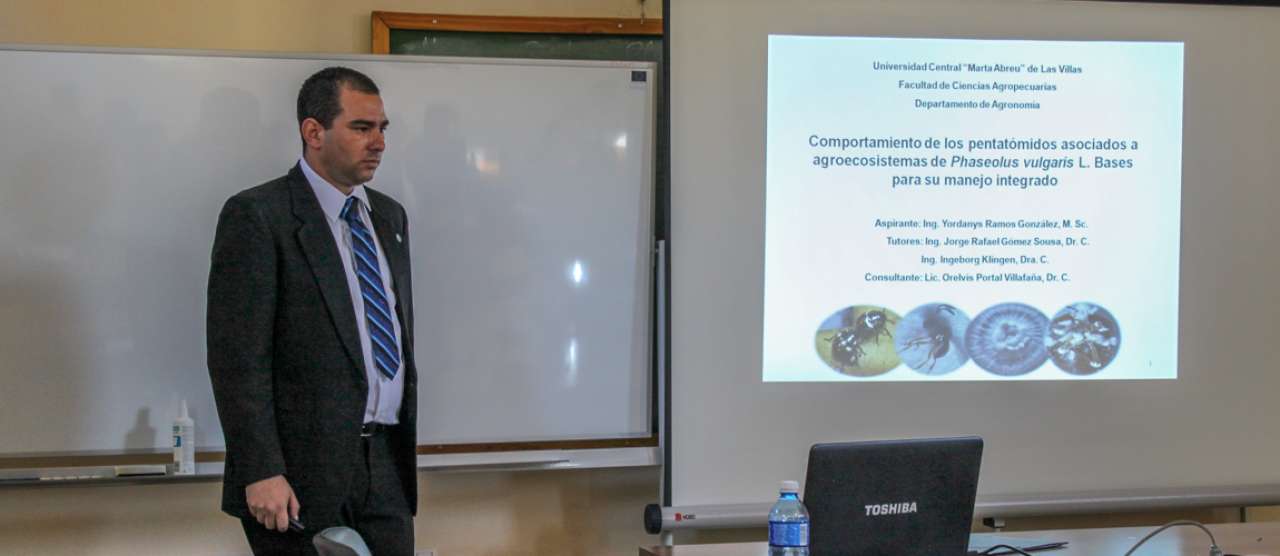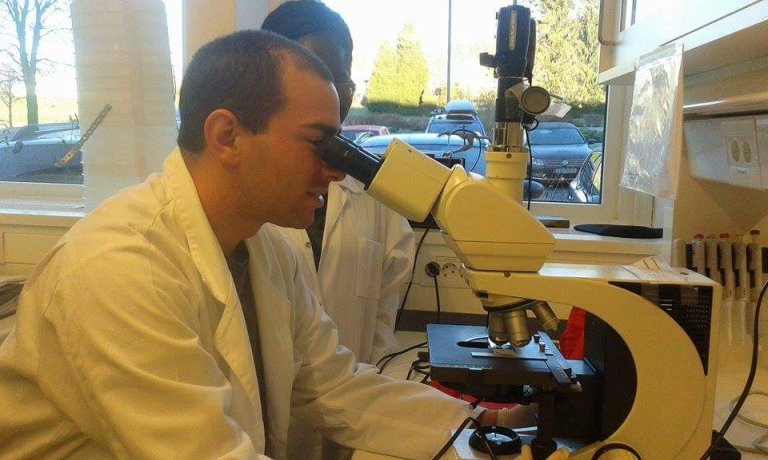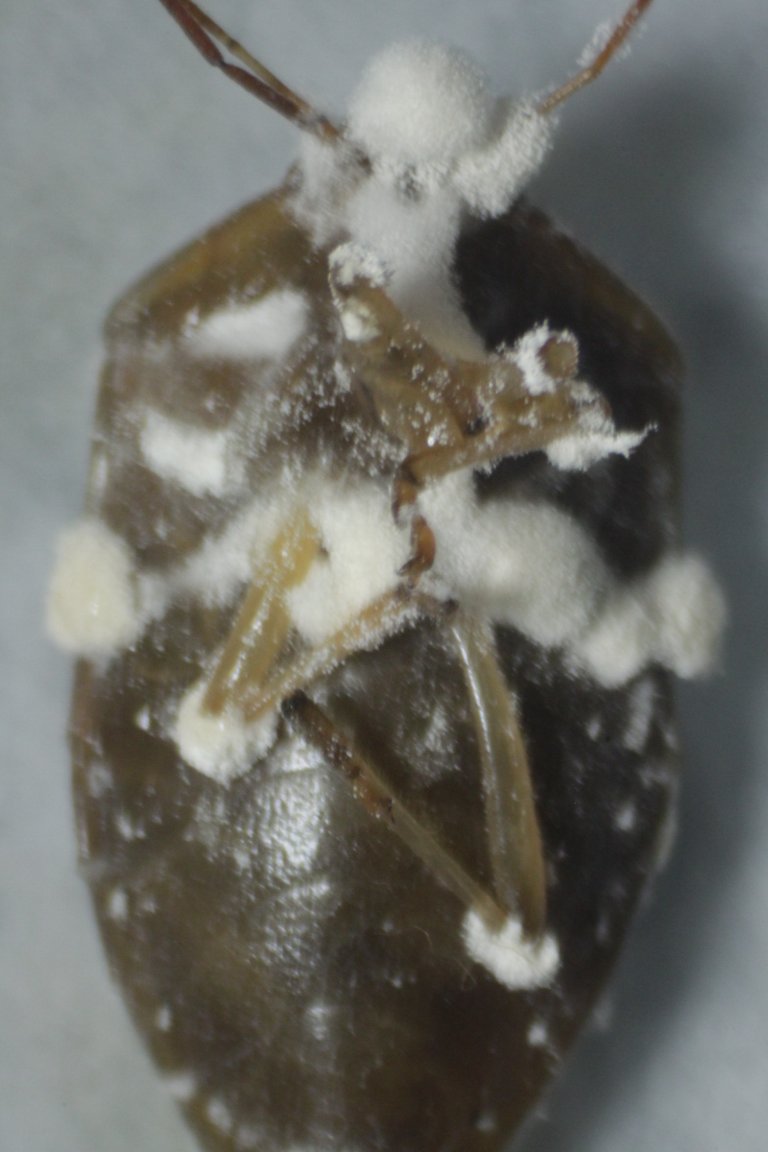Integrated management of stink bugs in beans

Yordanys Ramos González and his PhD presentation. Photo: Private.
In many tropical countries, stink bug-infestations are a severe problem in common bean production. A new PhD study looks at an integrated management system to control this agricultural pest.
Stink bugs are found throughout the world’s temperate and tropical areas. It is a serious agricultural pest and causes damage to a range of crops from common beans, soybeans, lima beans and corn to tobacco, peaches, grapes, tomatoes and cotton, as well as several species of weeds.
For common beans - an important protein crop and food staple in many countries in Latin America and sub-Saharan Africa – stink bugs present a major challenge.
In a new PhD thesis study, Yordanys Ramos González examines the biology, diversity, prevalence and management of stink bugs in common beans in Cuba, to find innovative and practical solutions that may be used in Integrated Pest Management (IPM) of these important pests in beans. The aim is to enable increased food production in Cuba and other tropical countries facing problems with stinkbugs in beans.

Important pests
- Common bean is an important nutrient source in many countries, especially in Eastern and Southern Africa and Central and South America. In these parts of the world, the human diet lacks animal protein and is largely based on legumes to supply protein. The stink bug species are important pests of legumes in these areas, explains Ramos González.
According to the PhD-student, the bug is also moving northwards, following the current climatic warming.
- Recently, breeding populations have been confirmed in Switzerland and Canada, but the pathways of entry and genetic diversity of most of these stink bugs remains unknown, he says.
Wild host plants play an important role as alternative host plants and may provide good conditions for the build-up of stink bug populations.
Stink bugs are known to cause direct injury by puncturing the seeds and pods of legumes with their piercing-sucking mouthparts, preferentially young pods and developing seeds. Seed feeding can cause seed abortion or deformation. A secondary impact of stink bug damages is that the feeding provides an opportunity for plant pathogens such as bacteria and yeasts to colonize the plant.

Using natural enemies
Several studies have been conducted on the biology, ecology and abundance of stink bugs in soybean, but there is a lack of studies in common bean, and those that exist are focusing on the feeding behavior of stink bugs.
- Our aim was therefore to determine the seasonal population density fluctuation of stink bug species in common bean, and evaluate the effect of three different bean cultivars on prevalence and damage caused by stink bugs.
We also looked at organic versus conventional production and the natural occurrence of the beneficial fungus Beauveria that is a natural enemy of stink bugs. The thesis then evaluates the potential of using IPM strategies such as the seeding date and natural enemies such as insect pathogenic fungi and parasitoids in biological control of these stink bugs, Ramos González explains.
A field experiment was conducted in Cuba during two bean growing seasons (2010-2011 and 2012-2013) at three seeding dates to identify stink bug species and determine their seasonal population density fluctuation and damage caused in three cultivars.
In addition to conducting his field and laboratory work in Cuba, Ramos González have been on a yearly exchange to NIBIO to conduct molecular laboratory work, literature studies and write his PhD thesis papers.
Control with fungus
Ramos González says the research results show that the main stink bugs found in bean agroecosystems in Cuba are the types Nezara viridula and Piezdorus guildinii. The researchers uncovered that the populations peak at the time of fruit development.
- Our research show that the bean cultivar ICA Pijao is the best choice to avoid stink bug damage, he says.
All the isolates of the beneficial fungus Beauveria obtained from the bean agroecosystems were molecularly identified to belong to the species Beauveria bassiana. There was a higher occurrence of this beneficial fungus in organic than conventional agroecosystems.
He explains that the research showed that this fungus can be used to efficiently control stink bugs:
- Our study also evaluated the efficacy of B. bassiana in the control of stink bugs and we have found an isolate that is a promising biocontrol candidate for the use in integrated management in Cuba and elsewhere in the tropics, Ramos González says.
KONTAKTPERSON

Facts
The PhD thesis work has been a collaboration between Facultad de Ciencias Agropecuarias, Universidad Central "Marta Abreu" de Las Villas (UCLV), Santa Clara, Cuba, and Norwegian Institute of Bioeconomy Research (NIBIO), Biotechnology and Plant Health Division in Ås, Norway. The Cuban PhD student successfully defended his thesis titled "Behaviour of stink bugs (Hemipera: Pentatomidae) in bean agroecosystems in December 2016. His supervisors were Dr C. Jorge R. Gómez Sousa (UCLV) and Dr Ingeborg Klingen (NIBIO). Further he has been consulted by Dr C. Orelvis Portal Villafaña (UCLV).  Yordanys Ramos González. Photo: Erling Fløistad.
Yordanys Ramos González. Photo: Erling Fløistad.
KONTAKTPERSON

Tekst frå www.nibio.no kan brukast med tilvising til opphavskjelda. Bilete på www.nibio.no kan ikkje brukast utan samtykke frå kommunikasjonseininga. NIBIO har ikkje ansvar for innhald på eksterne nettstader som det er lenka til.
